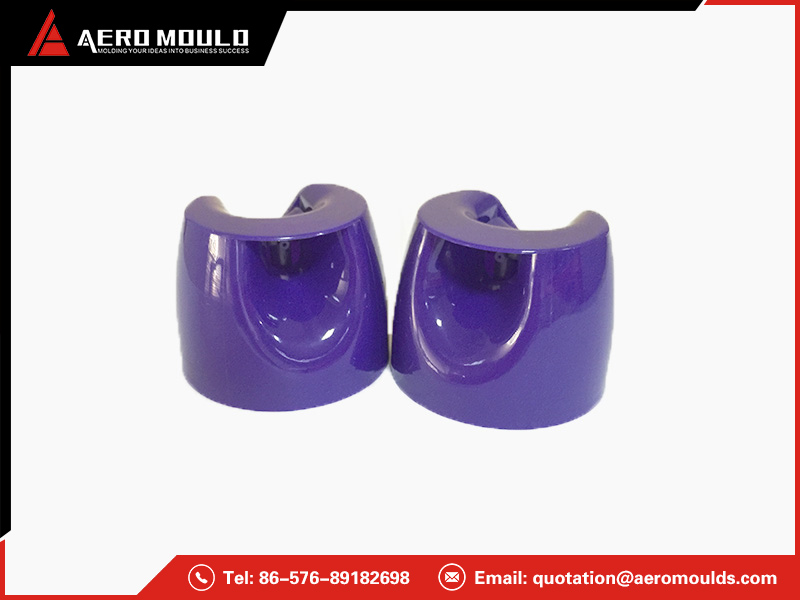Aero Mould Co., Ltd
Mobile/whatsapp: 0086-13666469798
Add: 18# KaiTuo Road, XinQian Street, Huangyan District, Taizhou, Zhejiang, China


The gate, also known as the feed port, is the channel c […]
The gate, also known as the feed port, is the channel connecting the runner and the melt in the cavity. The proper choice of gate is directly related to whether the injection molded product is intact and injection molded with high quality. Gate design includes the determination of gate cross-sectional shape and size and the choice of gate location. In the design of injection molds, according to the structure and characteristics of the gate, the commonly used gate forms are the following 11 types.
1. Straight gate: it is the mainstream gate, which is a non-limiting gate
(1) Advantages: The plastic melt enters the cavity directly from the large end of the main channel, so it has the characteristics of low flow resistance, short flow and long replenishment time. Such a gate has a good melt flow state, and the melt flows from the center of the bottom surface of the cavity to the parting surface, which is beneficial to exhaust; this gate form minimizes the projected area of the injection molded product and the pouring system on the parting surface The mold structure is compact and the injection molding machine is evenly stressed.
(2) Disadvantages: There is a large residual stress at the feed, which is easy to cause warpage and deformation of injection products. At the same time, the gate is large, it is difficult to remove the gate traces and the traces are large, which affects the appearance. Injection molding large and medium-sized long process, deep cavity, cylindrical or shell injection products, especially suitable for polycarbonate, polysulfone and other high-viscosity plastics. In addition, this type of gate is only suitable for single cavity molds.
When designing such gates, in order to reduce the area of the gate where it contacts the injection molded product and prevent defects such as shrinkage and deformation at the site, on the one hand, the taper angle of the main channel with a smaller taper should be selected as much as possible (from 2 to 4 °), on the other hand, the thickness of the fixed template and fixed mold base should be minimized.
2. Side gate: The side gate is called a standard gate in foreign countries. The side gate is generally opened on the parting surface.The plastic melt fills the mold cavity from the inside or the outside.The cross-sectional shape is mostly rectangular (flat groove) .Change the gate width and thickness to adjust the shear rate and pouring of the melt. The freezing time of the mouth. This type of gate can choose its position according to the shape characteristics of the injection molded product, and it is convenient to process and trim, so it is widely used.
(1) Advantages: The gate section is small, which can reduce the consumption of molten material in the pouring system, the gate is easily removed, and the trace is not obvious. It is suitable for injection products of various shapes, but it is not suitable for slender barrel-shaped injection products.
(2) Disadvantages: Injection products and gates cannot be separated on their own, there are welding marks, injection pressure loss is large, which is unfavorable for the exhaust of deep cavity injection products.
3. Fan-shaped gate: The fan-shaped gate is generally opened on the parting surface and feeds from the outer side of the cavity. The gate gradually widens in the feeding direction and the thickness gradually decreases. The wave front of the plastic melt entering the cavity from the gate is relatively straight, which can reduce warpage and deformation, and is suitable for forming a plate-shaped plastic product with a large width.
4. Thin gate: also known as flat seam gate. The distribution runner of the gate is parallel to the side of the cavity, and its length is usually greater than the width of the plastic product.
(1) Advantages: The plastic melt enters the cavity uniformly at a relatively low speed through the sheet gate, and its material flow is parallel, which can avoid warpage and deformation. It is commonly used to form flat large-area thin-walled plastic products.
(2) Disadvantages: It is difficult to remove the gate, which increases the production cost of plastic products.
5. Ear protector gate: The ear protector gate is mainly used for highly transparent flat-shaped plastic products and plastic products with small deformation requirements.
(1) Advantages: The ear protection gate is provided with an ear groove on the side of the cavity. The melt generates frictional heat on the side of the ear groove through the gate impact, thereby improving the fluidity. After adjusting the direction and speed, the ear groove is uniform and Entering the cavity smoothly can avoid jet flow.
(2) Disadvantages: gate removal is more difficult and gate traces are larger.
6. Point gate: The point gate is especially suitable for barrel-shaped, shell-shaped and box-shaped plastic products. For large flat plastic products, multiple point gates can be set to reduce warpage; for thin-walled plastic products, the shear rate near the gate is too high, the residual stress is large, and it is easy to crack. The wall thickness at the mouth.
(1) Advantages: The position of the point gate is limited, the gate trace is small, and the gate can be automatically broken when the mold is opened, which is conducive to automatic operation.
(2) Disadvantages: The injection pressure is large. In most cases, the three-plate mold structure must be used. The mold is relatively complicated and the molding cycle is long.
7. Latent gate
(1) Advantages: The position of the latent gate is more flexible, and it can be glued on the inner and outer surfaces of the plastic products. The runner is opened on the parting surface, the gate dives under the parting surface, and the melt enters the cavity obliquely. Since the push-out mechanism is separately provided in the plastic product and the runner, the gate is automatically cut off when the mold is opened, and the condensate in the runner automatically falls off. At the same time, its mold structure is simpler than the three-plate mold structure, which greatly improves production efficiency and reduces costs.
(2) Disadvantages: It is not suitable for too tough or too brittle plastics, the former is not easy to cut, the latter is easy to break, and it is easy to block the gate.
8. Moon-shaped gate: The moon-shaped gate is actually a structure of arc-shaped latent gate. It is generally used in the two-plate mold. The parting surface is directly fed into the glue to make two pieces of inserts. The runner and gate are designed on the insert.
(1) Advantages: It can be glued on the bottom of the product. It has the characteristics of a point gate. The gate trace is small, and it can be automatically broken when it is ejected, which is easy to realize automation. If the head of the ejection pin is made into a cone, the ejection mechanism is provided in the flow channel, which is beneficial to ejection.
(2) Disadvantages: The shape is more complicated, and the gate needs to be processed with electrodes.
9. Ring gate
The gate for filling the cavity with a circular ring feed is called a ring gate.
(1) Advantages: the feed is uniform, the flow velocity is almost the same everywhere on the circumference, the flow state is good, it is easy to exclude the air in the cavity, and the welding mark can be avoided. Because the gate is designed on the core, the ring gate is mainly used to form cylindrical bottomless plastic products.
(2) Disadvantages: the pouring system consumes more materials, the gate is difficult to remove, and the gate traces are obvious.
10. Umbrella gate: Umbrella gate is a special form of ring gate, mainly used in short thick tube shaped plastic products with high quality requirements.
(1) Advantages: uniform feeding, no welding marks, good exhaust.
(2) Disadvantages: cutting process must be used to remove the flow channel, which increases the cost.
11. Disc gate: The disc gate is actually an umbrella gate with a top angle of 180 °. It is used for cylindrical plastic products with large inner holes or plastic products with large rectangular inner holes. The mouth is on the entire periphery of the inner hole.
(1) Advantages: It has the characteristics of an umbrella gate. The plastic melt is injected into the cavity from the periphery of the inner hole in a substantially synchronized manner. The core is evenly stressed, which can avoid welding marks and smooth exhaust.
(2) Disadvantages: Will leave obvious gate marks on the inner edge of plastic products.
Mobile/whatsapp: 0086-13666469798
Add: 18# KaiTuo Road, XinQian Street, Huangyan District, Taizhou, Zhejiang, China
